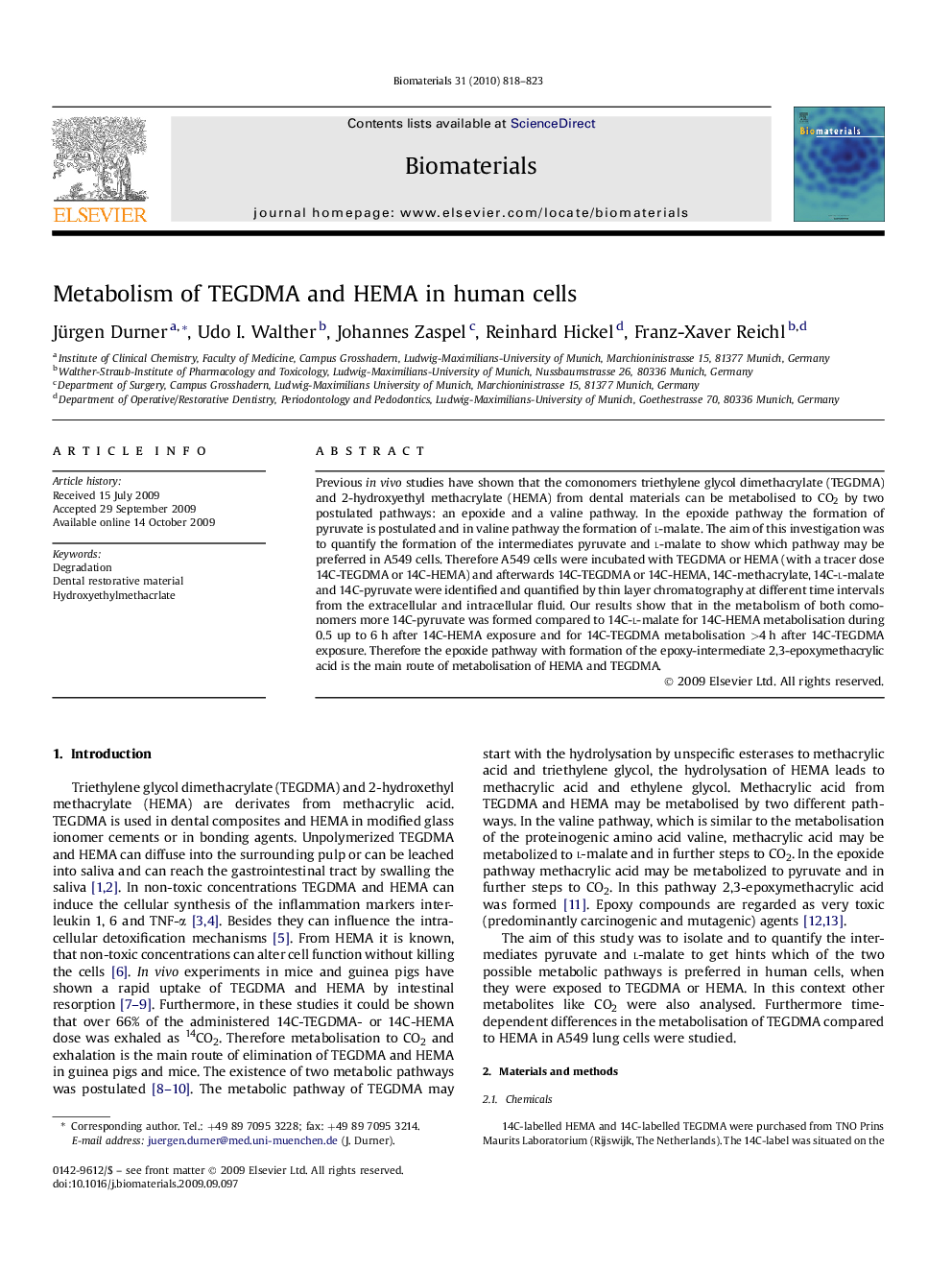| کد مقاله | کد نشریه | سال انتشار | مقاله انگلیسی | نسخه تمام متن |
|---|---|---|---|---|
| 9903 | 653 | 2010 | 6 صفحه PDF | دانلود رایگان |

Previous in vivo studies have shown that the comonomers triethylene glycol dimethacrylate (TEGDMA) and 2-hydroxyethyl methacrylate (HEMA) from dental materials can be metabolised to CO2 by two postulated pathways: an epoxide and a valine pathway. In the epoxide pathway the formation of pyruvate is postulated and in valine pathway the formation of l-malate. The aim of this investigation was to quantify the formation of the intermediates pyruvate and l-malate to show which pathway may be preferred in A549 cells. Therefore A549 cells were incubated with TEGDMA or HEMA (with a tracer dose 14C-TEGDMA or 14C-HEMA) and afterwards 14C-TEGDMA or 14C-HEMA, 14C-methacrylate, 14C-l-malate and 14C-pyruvate were identified and quantified by thin layer chromatography at different time intervals from the extracellular and intracellular fluid. Our results show that in the metabolism of both comonomers more 14C-pyruvate was formed compared to 14C-l-malate for 14C-HEMA metabolisation during 0.5 up to 6 h after 14C-HEMA exposure and for 14C-TEGDMA metabolisation >4 h after 14C-TEGDMA exposure. Therefore the epoxide pathway with formation of the epoxy-intermediate 2,3-epoxymethacrylic acid is the main route of metabolisation of HEMA and TEGDMA.
Journal: Biomaterials - Volume 31, Issue 5, February 2010, Pages 818–823